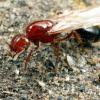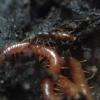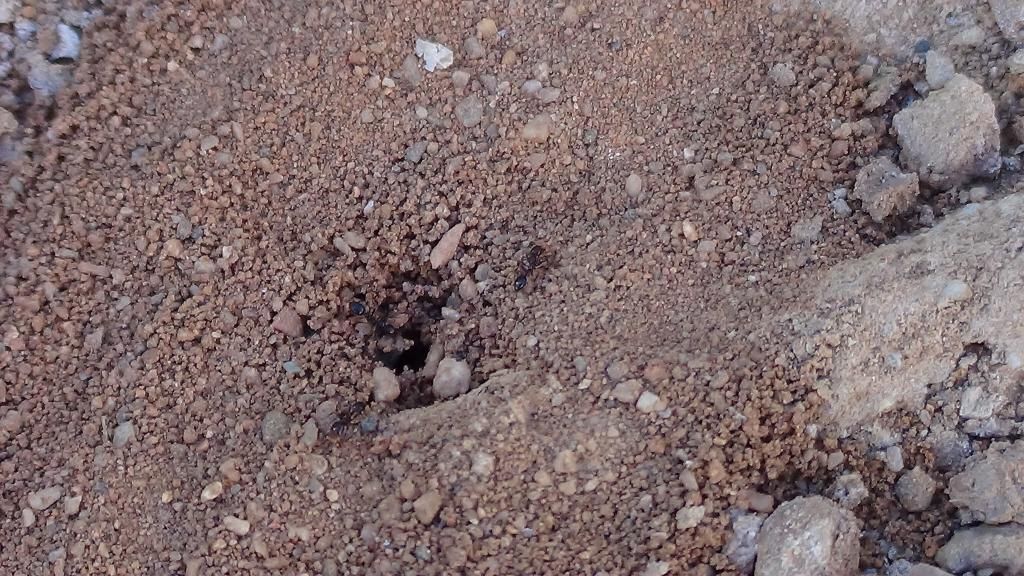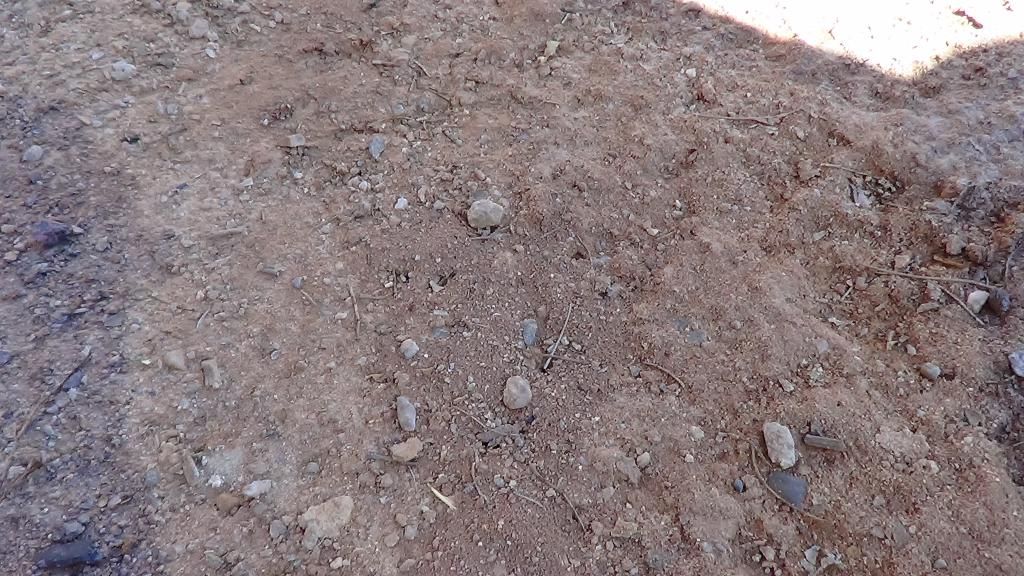Location: Backyard
Date collected: 10-31-2014
Habitat: Desert
Length: Minor = 4-5mm, Major = 6-8mm
Coloration: They look plain black from eye level. Close up under light, they have dark red heads and black bodies.
Characteristics: They look to have 2 nodes with spines.
Nest characteristics: Sorry but no pics. Their nest has many different entrances. I counted ~21 different holes within a 10 square foot area. Their mounds are not noticeable at all.
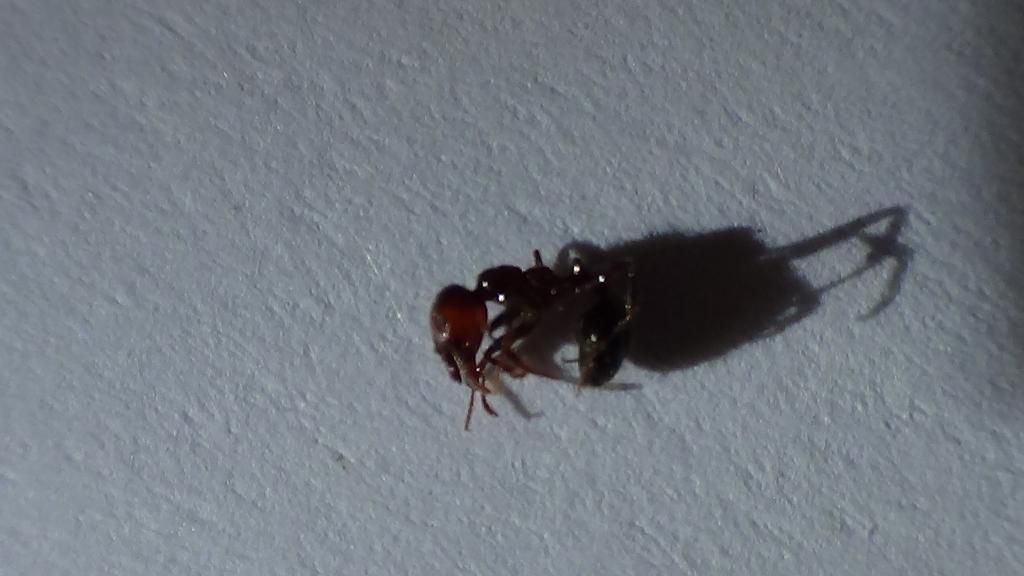
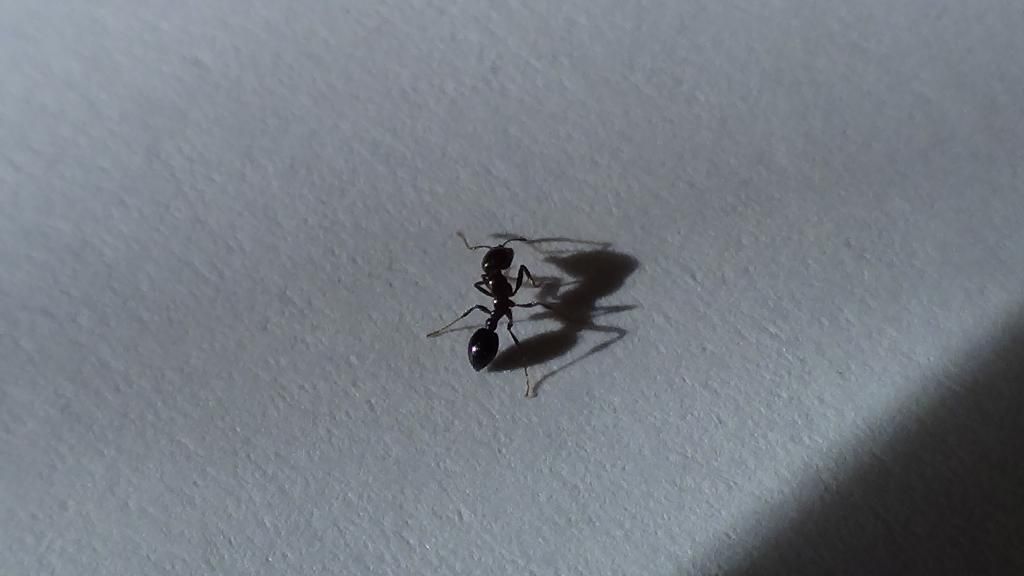
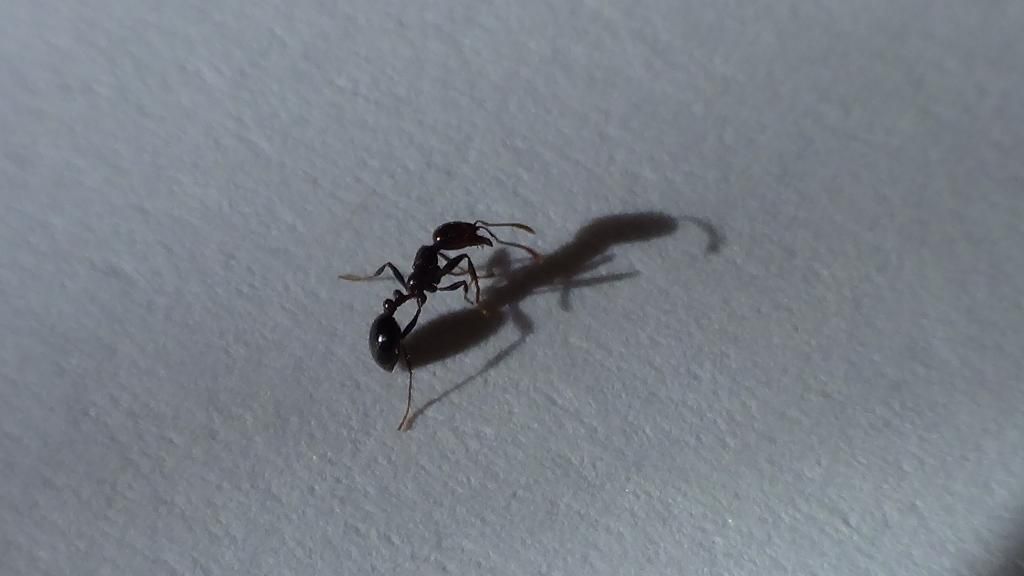

The first and last pictures are the major. Sorry for the poor quality.

